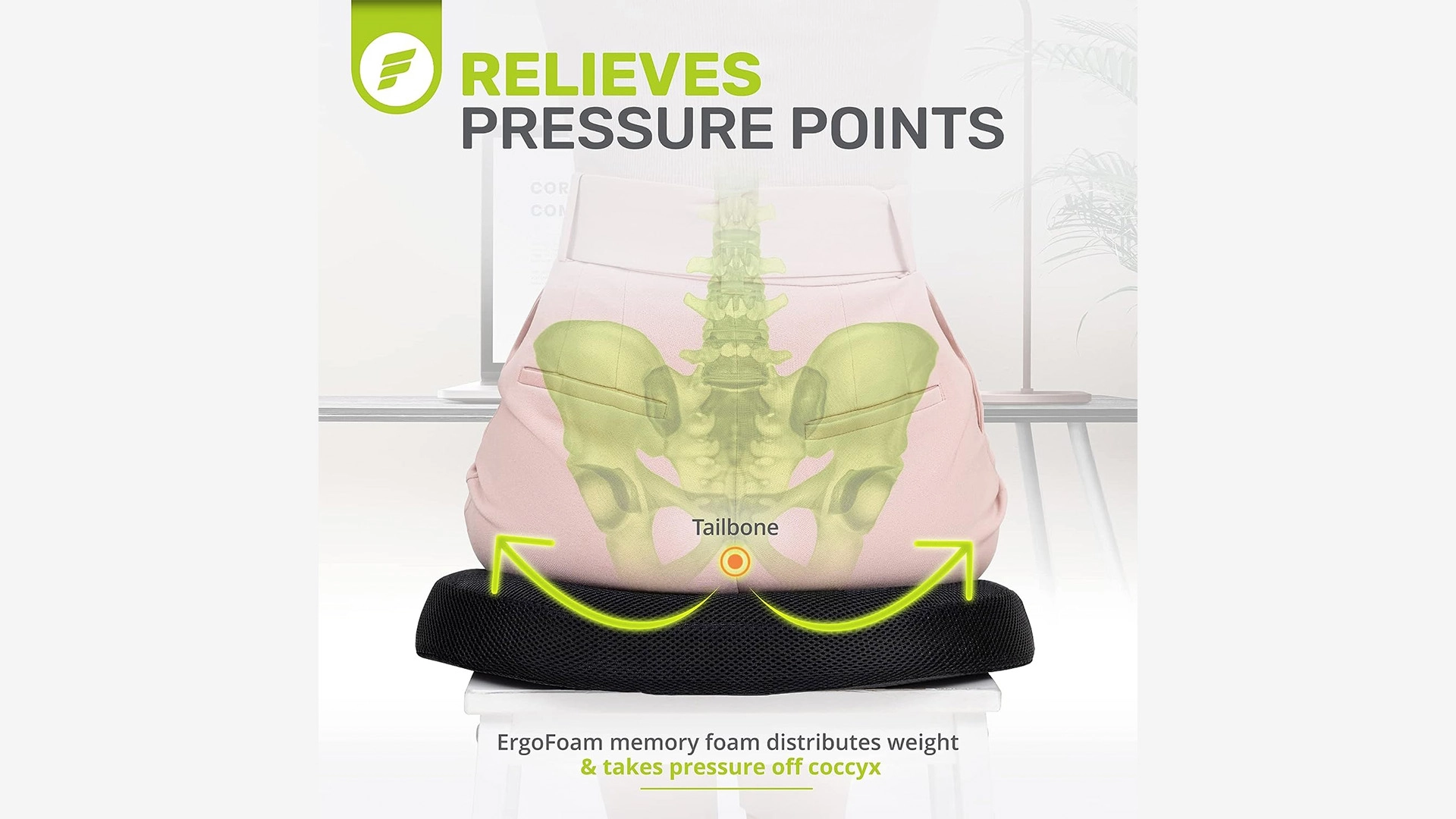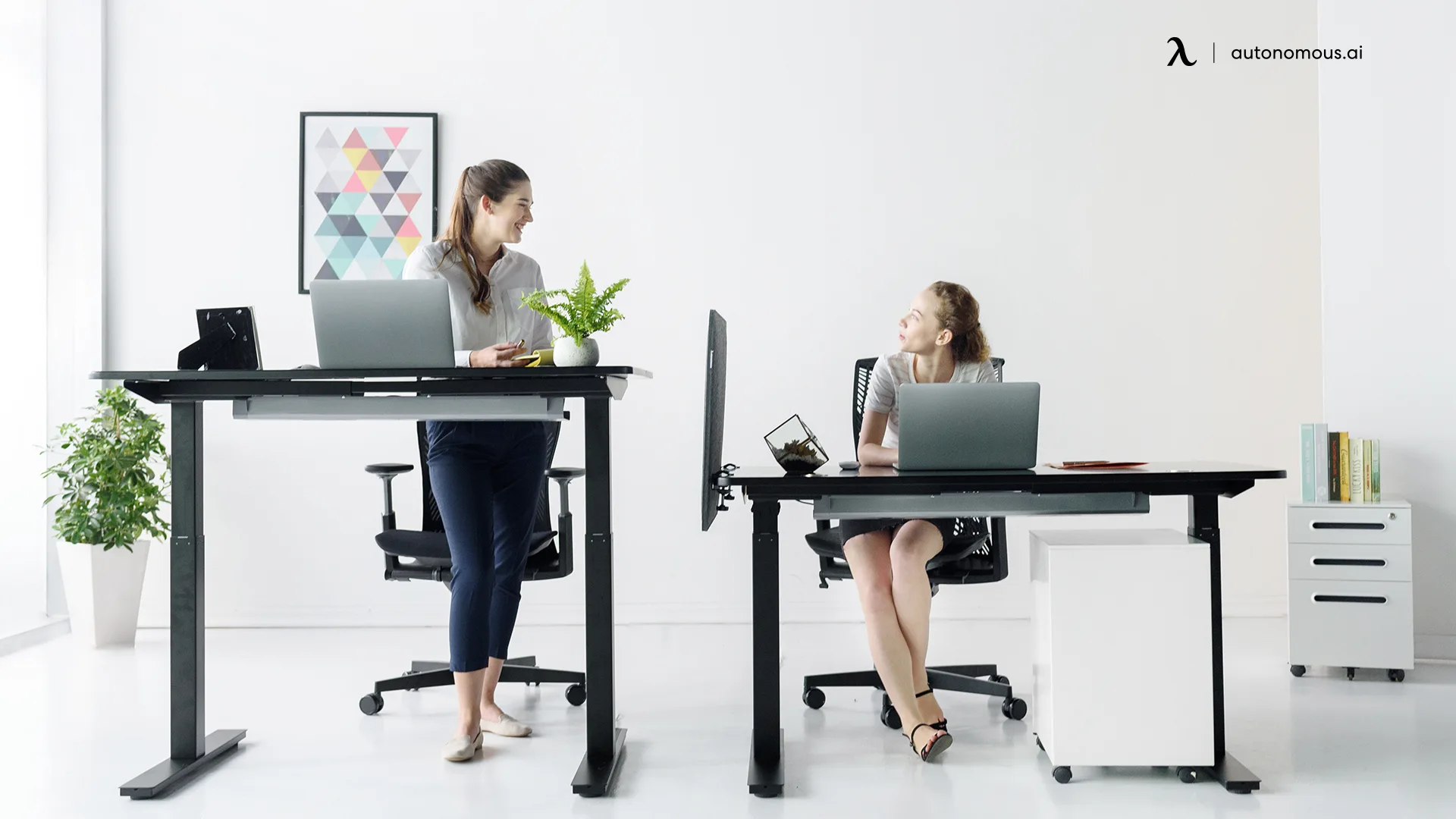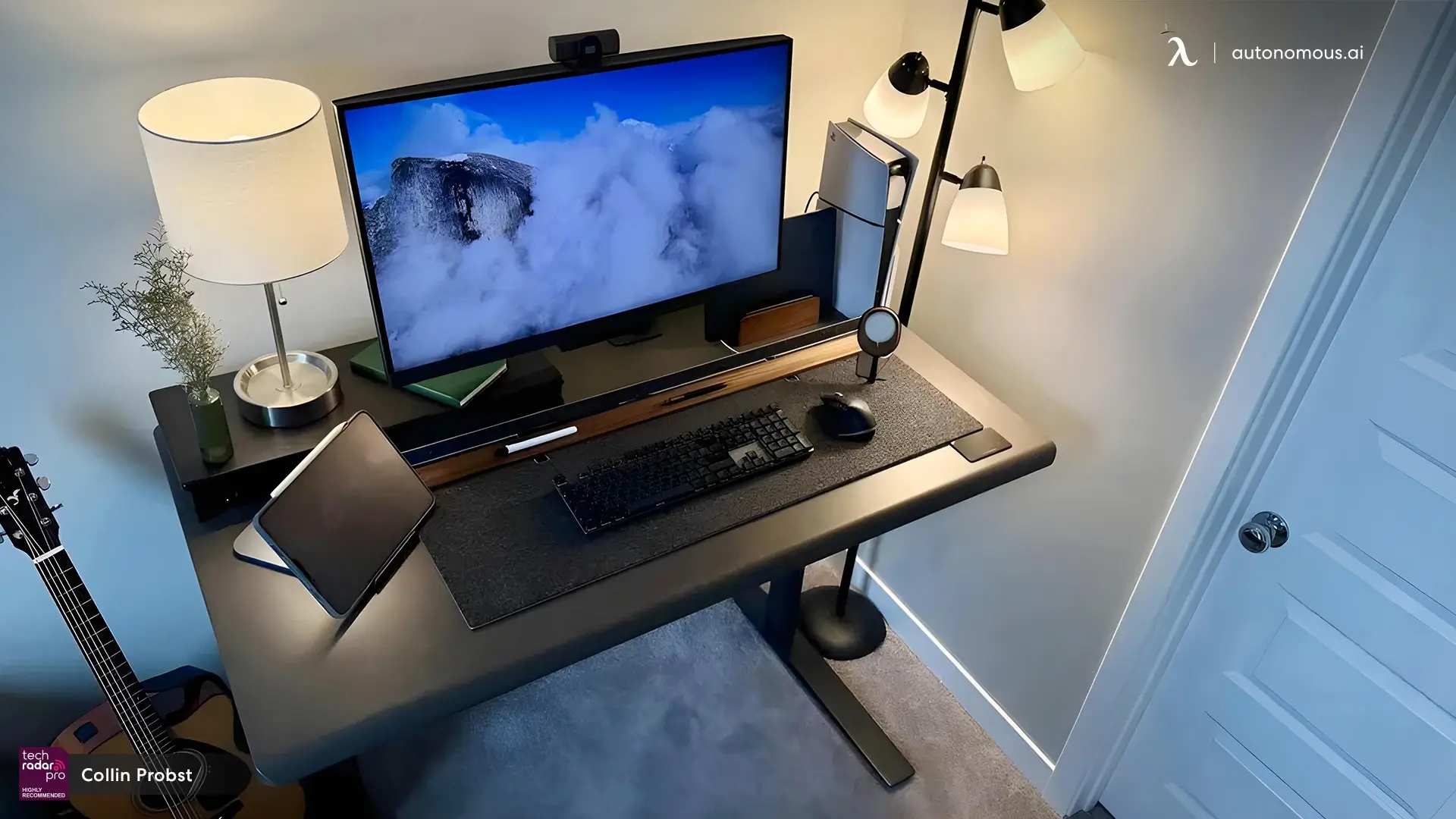
Tailbone Pain From Sitting at Desk: How to Fix It?
Table of Contents
Sitting at a desk for long hours is part of many people's daily routine, whether you're working from home, at the office, or studying. However, this sedentary lifestyle can lead to a variety of discomforts, and one of the most common issues is tailbone pain. If you're experiencing discomfort or pain at the base of your spine, you may be dealing with a condition known as coccydynia (tailbone pain). In this article, we’ll explore the causes of tailbone pain from sitting, how to prevent it, and the best solutions to keep you comfortable throughout the day.
What Causes Tailbone Pain While Sitting?
Tailbone pain is primarily caused by prolonged sitting, particularly when you’re sitting for long periods on hard or unsupportive surfaces. Here’s why:
Prolonged Sitting: Sitting for extended periods puts constant pressure on the coccyx (tailbone), which can lead to irritation and inflammation. Over time, this pressure can cause pain.
Poor Posture: Slouching or sitting in a hunched position can lead to misalignment of the spine, which places extra stress on the tailbone. Additionally, leaning forward too much or arching your back excessively can exacerbate discomfort.
Hard or Unsupportive Seats: Sitting on hard surfaces or chairs without proper cushioning can increase pressure on the tailbone. Without adequate padding, your coccyx bears the brunt of your body weight, leading to pain.
Muscle Imbalances: Weak core and lower back muscles can contribute to poor posture and increased pressure on the tailbone. If these muscles are not strong enough to support your body properly, other parts of your body—including your coccyx—may compensate, causing pain.

Symptoms of Tailbone Pain
Tailbone pain can vary in severity, from mild discomfort to sharp, intense pain. The symptoms typically include:
- Pain while sitting: Sitting, especially on hard surfaces, is often the most uncomfortable position.
- Pain when standing up: The pain can intensify when transitioning from sitting to standing.
- Pain while moving: Changing positions, such as leaning forward or back, may worsen the pain.
- Sharp or aching pain: The sensation can be sharp and localized at the base of the spine, or it may feel like a dull, aching discomfort.
- Pain duration: The pain may be temporary or persist for several hours or even days, depending on the severity of the issue.
If the pain is persistent or worsens, it's essential to address it before it becomes a chronic issue.

Prevention Tips for Avoiding Tailbone Pain
Preventing tailbone pain starts with addressing the factors that contribute to the discomfort. Here are a few tips to help you avoid or reduce tailbone pain:
1. Ergonomic Seating
One of the most effective ways to prevent tailbone pain is by using an ergonomic chair designed to support your body properly. The best office chair for tailbone pain should provide:
- Lumbar support to maintain the natural curve of your spine.
- A seat with a contoured edge to relieve pressure on your tailbone.
- Adjustable height and tilt to keep your hips and knees at a comfortable angle.
2. Posture Correction
Maintaining good posture is crucial for preventing tailbone pain. Here’s how to sit correctly:
- Keep your feet flat on the floor or on a footrest.
- Sit with your back straight and shoulders relaxed, avoiding slouching or hunching over.
- Position your computer monitor at eye level to avoid straining your neck and back.
3. Take Breaks
Staying seated for long periods puts pressure on your tailbone. Make it a habit to stand, stretch, or walk around every 30 minutes. This helps alleviate pressure on your coccyx and promotes better circulation.
Alternating between sitting and standing throughout the day can reduce the pressure on your tailbone. Adjustable standing desks allow you to easily switch between sitting and standing, helping alleviate discomfort and improve your posture.
For proper setup, it’s essential to keep standing desk ergonomics in mind to maintain a healthy posture while standing. If neck pain is also an issue, explore the best desk for neck pain to find desks that offer better support for your neck and spine.
4. Seat Cushioning
Adding a cushion or seat pad can help provide extra comfort and reduce pressure on your tailbone. For breathable support that fits a variety of setups and needs, consider choosing the best fabric office chair options, and look for cushions with a cut-out at the back to relieve direct pressure on the coccyx.
There are several types of seat cushions to consider:
Type | Features | Best For |
Coccyx seat cushion | Designed with a cut-out or contoured shape to relieve pressure on the tailbone | Long hours at a desk; preventing tailbone pain |
Coccyx gel cushion | Contains a gel layer that absorbs impact, keeps you cool, and adapts to your body shape | Users who overheat or need extra pressure relief |
Coccyx seat pad | Portable foam-based pad that can be placed on almost any chair | People who switch chairs often or need temporary tailbone support |
Coccyx orthopedic memory foam seat cushion | Memory foam that conforms to your spine and tailbone, providing full ergonomic support | Chronic tailbone pain or long sitting sessions |
Choosing the right coccyx gel cushion or memory foam seat cushion can make a noticeable difference, especially if your chair doesn’t already offer strong tailbone support. Even a small adjustment, like adding a coccyx seat pad, can prevent pain from building up and encourage better posture while seated. For maximum comfort, pair a high-quality coccyx seat cushion with an ergonomic chair designed to relieve pressure on the coccyx.
If sciatica or lower back pain is also a concern, check out our suggestions for the best office chair for sciatica and best chair for lower back pain at home. For those with SI joint issues, look into the best chair for SI joint pain or best chair for hip pain for added comfort.
5. Strengthening Exercises
Weak core and lower back muscles can increase pressure on your tailbone and contribute to poor posture. Incorporating simple strengthening exercises into your daily routine can help relieve tailbone pain, improve sitting posture, and reduce discomfort during long hours at your desk.
- Planks – Hold your body in a straight line from head to heels, supporting your weight on forearms and toes. Strengthens the core, lower back, and glutes, which supports your coccyx while sitting. Start with 15–30 seconds and gradually increase.
- Bridges – Lie on your back with knees bent and feet flat. Lift your hips toward the ceiling while squeezing your glutes. Strengthens glutes and lower back to reduce tailbone pressure. Hold 5–10 seconds, repeat 10–15 times.
- Back Extensions – Lie face down with hands behind your head. Gently lift your chest off the floor while keeping your neck neutral. Strengthens lower back muscles that support the tailbone. Avoid overextending.
- Seated Leg Lifts – Sit upright, extend one leg straight, hold for a few seconds, and lower slowly. Engages core and hip flexors to promote better posture and reduce coccyx strain. Perform 10–12 reps per leg, 2–3 sets.
- Cat-Cow Stretch – On all fours, arch your back (cat) and then drop your belly while lifting head and tailbone (cow). Improves spinal flexibility and relieves tension around the coccyx. Repeat 10–15 cycles slowly.
- Hip Flexor Stretch – Kneel on one knee, push hips forward gently, keeping your back straight. Helps release tight hip flexors that tilt the pelvis and increase tailbone pressure. Hold 20–30 seconds per side, 2–3 times.

When to Seek Medical Attention
While most cases of tailbone pain can be managed with posture correction and ergonomic adjustments, there are times when medical attention may be necessary:
- Persistent or severe pain: If your tailbone pain lasts for more than a few days or gets progressively worse, it’s essential to seek medical advice.
- Pain from an injury: If your pain follows a fall or injury to your tailbone, there may be a fracture or other underlying issue that requires medical attention.
- Additional symptoms: If your pain is accompanied by swelling, bruising, or numbness, it may indicate a more serious condition.
A healthcare professional can help assess the situation and recommend treatments such as physical therapy, medications, or even injections to reduce inflammation. Additionally, if you’re experiencing middle back pain from sitting at a desk or discomfort from sitting in certain positions, like knee pain from sitting cross-legged, these could be signs of further issues that need attention.
Conclusion
Tailbone pain is a common issue for those who spend long hours sitting at desks, but with the right adjustments, it’s entirely preventable and manageable. By using ergonomic seating, maintaining good posture, taking regular breaks, and incorporating strengthening exercises, you can protect your tailbone and improve your overall comfort. Consider exploring orthopedic chairs for back pain for added support during long sitting sessions. If you're looking for a chair for more than just your office, check out the best living room chair for back pain sufferers. For those experiencing upper back pain, a desk chair for upper back pain might help alleviate discomfort.
Remember, if the pain persists or worsens, it’s important to consult with a healthcare provider to rule out any underlying conditions. Taking these steps will not only help alleviate tailbone pain but also improve your overall health and productivity, making your workday more comfortable and enjoyable.
.svg)



.jpg)
/https://storage.googleapis.com/s3-autonomous-upgrade-3/static/upload/images/customer/3-2_1685439200.jpg)

/https://storage.googleapis.com/s3-autonomous-upgrade-3/static/upload/images/product/galleries/2203.3022-ergoactive-cooling-gel-seat-cushion-ergoactive-cooling-gel-seat-cushion-1646132054717.jpg)

/https://storage.googleapis.com/s3-autonomous-upgrade-3/static/upload/images/product/galleries/2201.3020--1646213498236.jpg)






